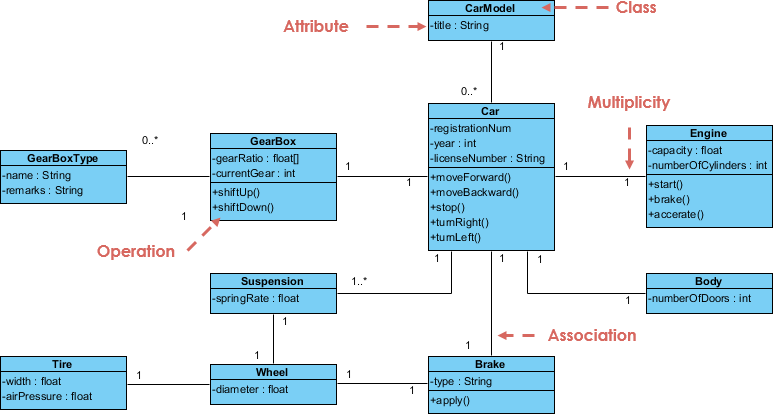OOP
Introduction to Object Oriented Design (OOD)
Welcome to the world of object-oriented programming (OOP). In this first lecture, we’ll delve into the fundamental concept of object-oriented design (OOD), which serves as the blueprint for building robust and maintainable software using OOP principles.
What is OOD?

Imagine a toolbox filled with various tools:
- wrenches
- screwdrivers
- hammers, each with a specific function.
OOD is like organizing your code into these well-defined tools objects. Each object has its own properties (data) and behaviors (functions) that work together to achieve a specific task.
Why OOD?

-
Real-world modeling: OOD allows you to represent real-world entities like cars, accounts, or documents as objects, making your code more intuitive.
For example a shopping cart modelled with properties like capacity, weight and methods like addItem(), removeItem() -
Modularity: Objects are self-contained units, promoting code reusability and easier maintenance.
- Maintainability: Changes made to one object are less likely to affect others, reducing the risk of unintended consequences.
- Scalability: Complex systems can be broken down into smaller, manageable objects, making them easier to expand and modify.
What will we learn about OOD?
Throughout this course, we’ll explore the core principles of OOD, including:
-
Classes and objects: We’ll learn how to define classes as blueprints for creating objects and explore the relationship between them.

-
Data abstraction (encapsulation): We’ll see how to protect an object’s internal data by controlling access to its properties and methods.
-
Inheritance: We’ll discover how to create new classes (subclasses) that inherit properties and behaviors from existing ones (parent classes), promoting code reuse.
-
Polymorphism: We’ll explore how objects of different classes can respond differently to the same message, enhancing code flexibility.
By the end of this course, you’ll be able to:
- Apply OOD principles to design and develop object-oriented programs.
- Understand the benefits of using objects, classes, and relationships between them.
- Implement core OOD concepts like encapsulation, inheritance, and polymorphism.
- Break down complex problems into smaller, manageable objects.
This introduction to OOD lays the foundation for your journey into the exciting world of object-oriented programming. Get ready to unleash the power of objects and build robust, maintainable, and scalable software applications!